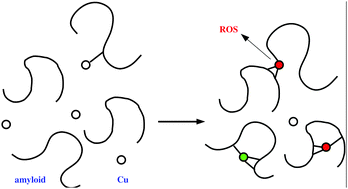Dioxygen activation in the Cu–amyloid β complex†
Abstract
We investigate, by means of density-functional theory, the binding of dioxygen to Cu(I)–amyloid β (Aβ), one of the first steps in the oxidation of ascorbate by dioxygen. Cu, Aβ, ascorbate and dioxygen are all present in the synapse during neurodegeneration, when the above species can trigger an irreversible oxidative stress inducing the eventual death of neurons. The binding of dioxygen to Cu(I) is possible and its role in dioxygen activation of Cu ligands and of residues in the first coordination sphere is described in atomic detail. Dioxygen is activated when a micro-environment suitable for a square-planar Cu2+ coordination is present and a negatively charged group like Asp 1 carboxylate takes part in the Cu coordination anti to O2.


 Please wait while we load your content...
Please wait while we load your content...